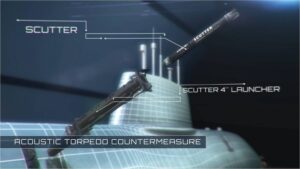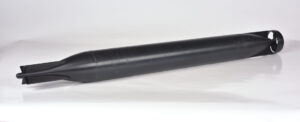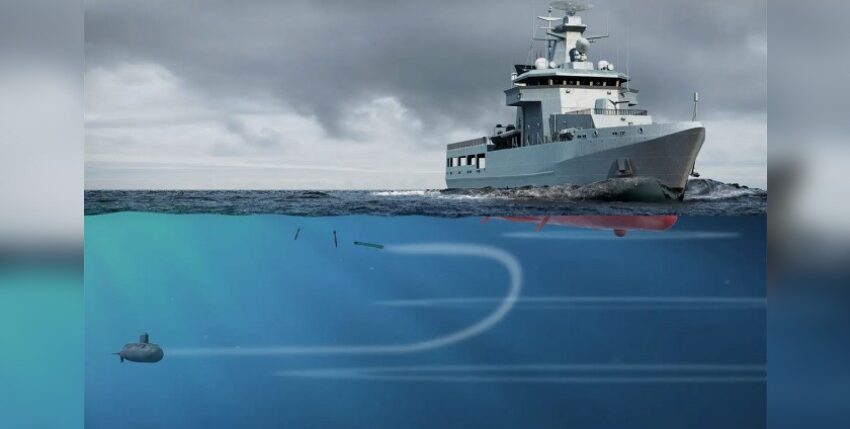DSIT Solutions Ltd (DSIT), a subsidiary of RAFAEL Advanced Defense Systems Ltd and the Israeli provider of underwater defence technology for 30 years, presented its torpedo defence system for surface vessels at EuroNaval 2022. Its components, a hull sensor in two variants, a control suite and the RAFAEL torpedo defence system as a combination of soft and hard-kill solution can be installed on a wide range of surface platforms and integrated into the existing command and weapon deployment systems.
In the course of a torpedo attack, the target has little time to recognise the threat and initiate effective countermeasures. In addition, the underwater signalling environment makes reliable classification difficult due to high false alarm rates. Traditional countermeasures when a threat is detected are drastic course manoeuvres and the use of acoustic devices from the ship. They are designed to distract, 'confuse' and lure the approaching torpedo into the void by imitating ship parameters at the wrong location. In the ideal case, the torpedo would continue to run into the wrong signals until the ship to be protected is out of range or the torpedo has 'burnt out'. A faster and safer, but more complex method is to lure the torpedo to the decoy with a detonation at the moment of closest approach.
The system now presented by DSIT promises early torpedo detection thanks to the "BlackFish" and "MonkFish" sonar devices and state-of-the-art signal processing. This enables the immediate initiation of the necessary defensive measures and evasive manoeuvres. The actual defence system consists of the components "SCUTTER Mk3" for softkill and "TORBUSTER SP" for hardkill. They were already presented in 2019 as the "Shade" torpedo defence system for submarines. RAFAEL described it as the first torpedo defence weapon system in the world to combine soft and hard-kill capabilities in one - and is now also offering it for surface platforms.
SCUTTER and TORBUSTER

SCUTTER Mk 3, as a "Reactive Expendable Acoustic Torpedo Countermeasure" a pure decoy, is used in the soft-kill approach. After firing, the SCUTTER hovers at a predetermined water depth for up to 10 minutes, where it emits specific jamming signals tailored to the acute threat or its own lock signals in the frequency range used by torpedoes between 17 and 85 kHz. SCUTTER is 1.10 metres long, has a diameter of 10.1 centimetres and weighs 7.3 kilograms. Its maximum operating depth is 200 metres.

As an active weapon, TORBUSTER is initially a decoy like the SCUTTER: after firing, it quickly moves away from the target to be protected and lures the torpedo to the position it has reached. At the time of the next approach, TORBUSTER detonates an explosive charge to destroy the torpedo or cause it to detonate. It is therefore twice as large and weighs seven times as much: length 2.3 metres. Diameter 19.8 centimetres, weight 52 kilograms.
Examples from other navies
Programmes for active torpedo defence are also being pursued by other navies. A few examples: Atlas Elektronik offers "SeaSpider", the Turkish Aselsan "Tork". The Russian Navy has the "Paket-E/NK" torpedo defence system. However, the US Navy discontinued its developments for the time being in September 2018 in order to reintroduce them into the budget planning for later years (FY23). The Indian Navy uses the "Maareech" decoy system, but also announced its cooperation with RAFAEL in February 2021 to supply the "Shade" torpedo defence system for Indian submarines.











